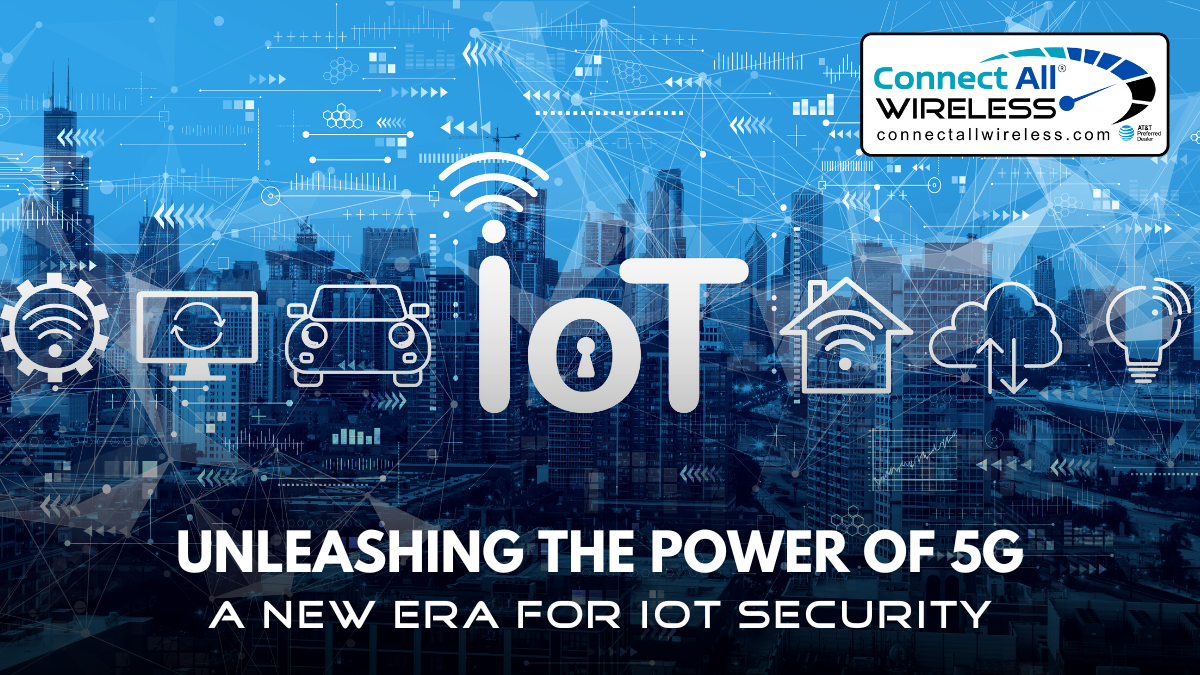Unleashing the Power of 5G: A New Era for IoT Security
October 9, 2023The digital landscape is evolving at an unprecedented pace, with advancements in technology constantly reshaping our world. Among these transformative innovations is the rollout of 5G wireless networks, a development that promises to revolutionize not only how we connect with each other but also how devices communicate with one another. As 5G Wi-Fi internet in Michigan and beyond becomes more prevalent, it ushers in a new era for IoT (Internet of Things) security.
The 5G Revolution in Michigan
Michigan, known for its thriving automotive industry and technological innovation, is at the forefront of adopting 5G technology. The deployment of 5G networks across the state is set to unleash high-speed, low-latency wireless connectivity that will benefit various sectors, including healthcare, transportation, manufacturing, and more.
With 5G Wi-Fi internet in Michigan, residents and businesses can expect lightning-fast internet speeds and a seamless connection experience. However, as the adoption of 5G networks accelerates, so too does the need for robust IoT security measures.
The IoT Landscape and Security Concerns
The Internet of Things refers to the interconnected network of physical devices, vehicles, appliances, and other objects embedded with sensors, software, and network connectivity. These IoT devices communicate and exchange data, enabling automation, remote monitoring, and improved efficiency across various industries.
While the potential benefits of IoT are vast, the proliferation of these devices also presents significant security challenges. Traditional security protocols may not suffice in a world where billions of devices are interconnected, especially with the introduction of high-speed 5G networks.
Here are some key security concerns associated with the IoT:
1. Data Privacy: As IoT devices collect and transmit vast amounts of data, ensuring the privacy of this data becomes paramount. Unauthorized access to sensitive information can lead to data breaches and privacy violations.
2. Device Vulnerabilities: IoT devices often have limited computing power and may lack the robust security features found in traditional computing devices. This makes them vulnerable to cyber attacks and malware infections.
3. Network Security: The sheer number of connected devices increases the attack surface for cybercriminals. Protecting the network infrastructure that supports IoT communication is crucial.
4. Supply Chain Risks: Many IoT components are sourced from various suppliers, increasing the risk of compromised devices entering the market. Ensuring the security of the entire supply chain is a growing concern.
How 5G Enhances IoT Security
The rollout of 5G networks in Michigan and other regions offers a unique opportunity to address some of these IoT security challenges.
Here’s how 5G is poised to enhance IoT security:
1. Reduced Latency: 5G’s ultra-low latency ensures that data travels quickly between devices and the cloud. This instantaneous communication enables faster threat detection and response, reducing the window of vulnerability.
2. Network Slicing: 5G allows network operators to create isolated “slices” of the network for specific purposes, such as IoT. This segmentation enhances security by isolating IoT traffic from other data flows, making it more challenging for cyberattacks to spread.
3. Improved Authentication: 5G networks support advanced authentication methods, such as multi-factor authentication (MFA) and biometrics. These measures enhance device security and reduce the risk of unauthorized access.
4. Enhanced Encryption: 5G networks offer stronger encryption protocols, protecting data as it travels between devices and the cloud. This makes it significantly harder for hackers to intercept and decipher sensitive information.
5. Over-the-Air Updates: 5G allows for seamless, over-the-air updates to IoT devices. This means that security patches and firmware updates can be quickly deployed to address vulnerabilities, reducing the risk of exploitation.
Conclusion
As Michigan embraces the era of 5G Wi-Fi internet, it brings with it the promise of a more connected and efficient future. However, this transformative technology also necessitates a renewed focus on IoT security. With the enhanced capabilities of 5G, we have an opportunity to bolster the security of our interconnected devices and protect the data that drives our digital world.
To fully unleash the power of 5G while mitigating security risks, stakeholders in Michigan and beyond must collaborate to develop and implement robust security measures. By doing so, we can ensure that the 5G-enabled IoT landscape is not only high-speed and efficient but also safe and secure for all.


